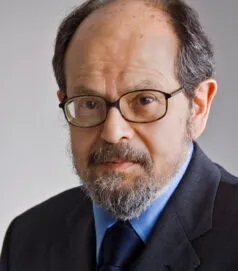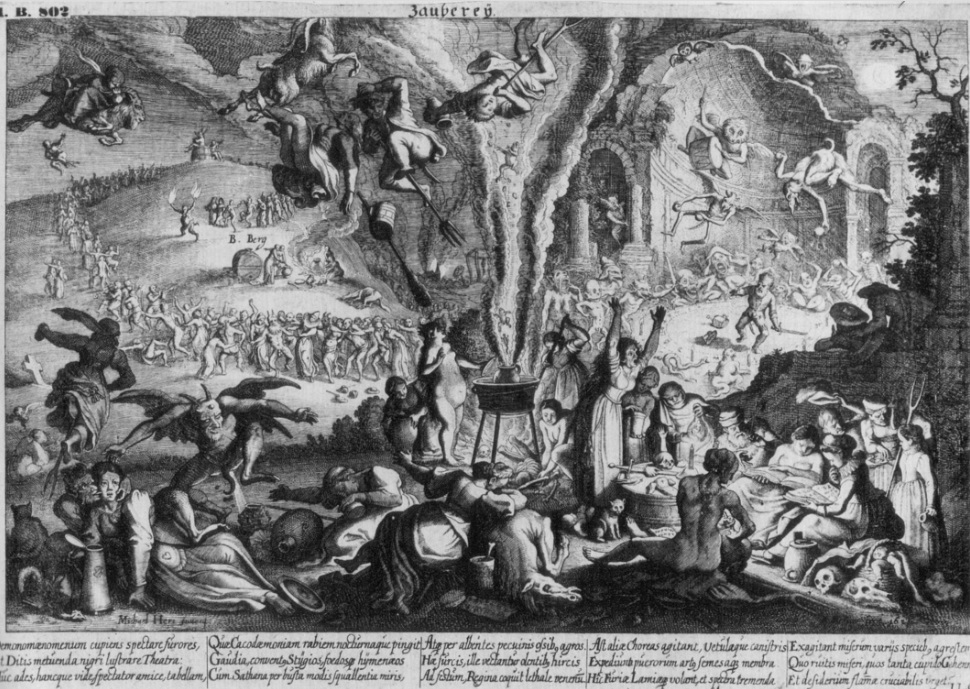By Jane Shaw Stroup from her blog at – janetakesonhistory.org
Can history help us understand today’s panic over global warming? I believe so.
I do think we are experiencing panic. While the Earth is warming and human activity is probably contributing to it, the overheated efforts to make people fear the long-term future suggest that this is more of a crusade than a rationally considered enterprise. Extreme fear of global warming is negatively affecting politics, the economy, the media, international relations, and education.
I will look at two disastrous periods that have some resemblance to today’s craze: witchcraft fears in the Middle Ages and the eugenics movement of the 1930s. I am not alone in making these comparisons to climate change alarm , as you will see. [1]
But first, bear with me as I report on some of the efforts to ignore or squelch criticism of the prevailing apocalyptic approach. These efforts are inappropriate, even unethical. Then I will discuss the two previous outsized eras.
Extreme Behavior
Here are a few actions regarding scientists that trouble me.
- The International Monetary Fund has just canceled (or “postponed”) a speech by 2022 Nobel-winning physicist John Clauser because he recently stated that climate change is not a crisis.
- A peer-reviewed article in the European Physical Journal Plus is being retracted because news media quoted scientists who didn’t like the findings—but they were unwilling to write a rebuttal.
- Prominent, much-honored scientists have been disparaged and slighted for their views. I have a list of those scientists. One example of the treatment: American Scientist, the journal of the scientific honor society Sigma Xi, refused to publish a well-known scientist’s article unless he found a coauthor who differed with him on global warming!
As for the media, you hear constantly about today’s heat waves—which are severe—but did you know that the U.S. in the 1930s was hotter than today? And a recent study in Global Environmental Change found that there were 51,230 peer-reviewed papers on climate change in 2020 and the media reported on just 9 percent, most from just six journals. Their choices mostly cover “a narrow and limited facet of climate change knowledge.” [2]
And it is obvious that politicians and businesses are on a bandwagon. Subsidies push wind and solar power and electric cars, while regulations prevent future oil and gas drilling and mining (even of minerals needed for electric batteries).
Witchcraft
The persecution, torture, and execution (some by fire) of witches in Europe began long before the Salem witch trials in the United States, as early as 1445 according to one source. In 1589, a series of nasty storms prevented Anne of Denmark, the young bride of Scotland’s King James VI, from reaching Edinburgh for months. Writes Megan Hamilton in the History Collection, James “believed witches conjured the fierce weather to keep his young Queen from attaining her throne.” His views spurred a round of persecutions known as the North Berwick Witch Trials, which led to 150 accusations, torture, and 25 deaths .[3]
This was the Little Ice Age, the period between 1300 and 1850, when weather often wiped out crops, caused shipwrecks, and made life miserable for people who lacked adequate shelter. [4] In an article in Spiked, Brendan O’Neill says:
“In his 1584 book, The Discoverie of Witchcraft, Reginald Scot, an English MP and author, outlined the common view of witches as climate changers. Many believe witches can ‘raise haile, tempests, and hurtfull weather’, he said, as well as being able to ‘inhibit the sunne, and staie both daye and night, changing the one into the other’. . . .” [5]
Belief that witches were changing the climate (and doing other awful things) was not entirely irrational. Some people claimed to be witches and earned their living from witchcraft. As Hamilton describes them,
“Most were elderly, having survived their husbands, and with no means of financial support. For them, the idea of practicing witchcraft was an attractive idea, and many claimed they had weather-changing abilities, especially in regards to stopping hailstorms. Farmers, ever hopeful that their talents might protect crops began paying these frail, elderly women who lived in run-down houses at the edges of forests.”
But their magic could turn on them, and did. As David Bessan wrote in Scientific American, “Frequent storms, long winters and cold summers caused famine and starvation and so the demoralized peasants, demanding for fast actions, forced the authorities to prosecute the supposed culprits.”
Eugenics
Let us move to a different era and a different theory, one that permeated the early twentieth century and was supported by such luminaries as Supreme Court justices Louis Brandeis and Oliver Wendell Holmes; Margaret Sanger; Alexander Graham Bell, George Bernard Shaw; H. G. Wells; and many, many others.
While climate change per se has nothing to do with eugenics, there may be similarities in the behavior of the public and leadership.
In a historical addendum to his 2004 novel State of Fear, Michael Crichton wrote: “The theory was eugenics, and its history so dreadful—and, to those who were caught up in it, so embarrassing—that it is now rarely discussed. But it is a story that should be well known to every citizen, so that its horrors are not repeated.” [7] He wrote this appendix to compare the eugenics movement to the extreme climate change alarmists he featured in his novel.
Eugenics was essentially a program to improve the quality and intelligence of Americans by preventing deterioration of the gene pool. While there is a connection between intelligence and inheritance, eugenics advocates went far beyond that. Emeritus MIT scientist Richard Lindzen wrote in 1996:

Richard Lindzen, Alfred P. Sloan Professor of Meteorology Emeritus, MIT
“Briefly, segments of the biology community studying human heredity began, in the early part of this century, to consider the possibility that ‘feeble-mindedness’ might be a simple Mendelian genetic characteristic characterized by a single recessive gene. The eugenics movement seized on this as the basis for a variety of practical actions including forced sterilization.”[8]
As Lindzen indicates, this theory—which many scientists soon realized was too simplistic—did not remain in the Ivory Tower. (The State of North Carolina conducted forced sterilizations until the 1970s.) Few of the scientists who realized the complexity spoke out. Improving the quality of future generations become a moral crusade.
These ideas became entangled with growing American concern about “rising hordes” of immigrants, especially from southern and eastern Europe. So-called intelligence tests administered in connection with World War I identified widespread lack of intelligence. While the entire country scored badly on these tests, the talk about eugenics tended to focus on immigrants.
“When immigration came to the fore of the political agenda,” writes Lindzen, “the eugenics movement was ready to provide the ‘scientific’ foundation.” Lindzen quotes a prominent economist, Irving Fisher, who said enthusiastically in 1912, “The stresses of immigration alone provided a golden opportunity to get people in general to talk eugenics.”
The only thing that stopped the movement was the horrific steps taken in Germany before and during the Second World War. (The Rockefeller Foundation was funding research in Germany as late as 1939, says Crichton.)
Then, a curtain of silence fell. “After World War II, nobody was a eugenicist, and nobody had ever been a eugenicist,” writes Crichton. “Biographers of the celebrated and the powerful did not dwell on the attractions of this philosophy to their subjects, and sometimes did not mention it at all.”
In the future, will advocates for fighting climate change at all costs be proud of their roles? I welcome comment.
“Witches’ Sabbath” above is a public domain image of a work by Michael Herr published in Nuremberg, Germany, in 1626. Available through Wikimedia Commons.
Notes
[1] The title, of course, comes from Charles Mackay, Extraordinary Delusions and the Madness of Crowds (London: Richard Bentley, 1841). However, no factual information in this article comes from that source.
[2] Marie-Elodie Perga, Oriane Sarrasin, Julia Steinberger, Stuart N. Lane , and , Fabrizio Butera,”The Climate Change Research That Makes the Front Page: Is It Fit to Engage Societal Action?” Global Environmental Change 80 (May 2023), https://www.sciencedirect.com/science/article/pii/S0959378023000419?via%3Dihub.
[3] Megan Hamilton, “How Climate Change Spurred Witch Hunts In Medieval Europe Before The Age of Enlightenment,” History Collection, https://historycollection.com/how-climate-change-spurred-witch-hunts-in-medieval-europe-before-the-age-of-enlightenment/.
[4] Brian Fagan, The Little Ice Age: How Climate Made History, 1300–1850 (New York: Basic Books, 2000).
[5] Brendan O’Neill, “The Climate Witch Trials,” Spiked (July 22, 2023), https://www.spiked-online.com/2023/07/22/the-climate-witch-trials/.
[6] David Bessan, “Medieval Witch Hunts Influenced by Climate Change,” Scientific American (Nov. 3, 2014), https://historycollection.com/how-climate-change-spurred-witch-hunts-in-medieval-europe-before-the-age-of-enlightenment/.
[7] Michael Crichton, “Why Politicized Science Is Dangerous,” First Appendix, State of Fear (New York: Harper Collins, 2004). Available online at: https://mennodeboer.com/2021/06/14/michael-crichton-why-politicized-science-is-dangerous/.
[8] Richard S. Lindzen, “Science and Politics: Global Warming and Eugenics,” in Risks, Costs, and Lives Saved, R. W. Hahn, ed. (New York: Oxford University Press, 1996).

0 Comments